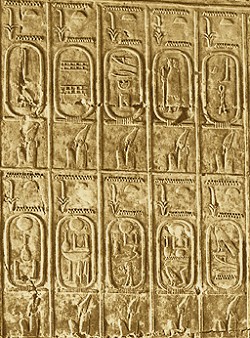
Once the rulers of Kush had defeated the 23rd Dynasty in Upper Egypt and the 24th Dynasty in the Delta (Kashta and Pye being the victors), it was a brother of Pye, Shabaka, who was the first to rule over all Egypt (as well as Nubia as far south as Khartoum). He is usually regarded as the founder of the 25th Dynasty, although some scholars consider that it began under Kashta. The actual residence of this dynasty was Napata in Nubia, near the 4th Cataract. Shabaka built and expanded several temples in Egypt and Nubia. The so-called Shabaka stone (now in the British Museum in London) is also well known. It contains a text which relates how the god Ptah of Memphis created the world; the text claims to be a copy of a much older manuscript 'eaten by worms' and thus preserved in stone. Taharqa, one of Shabaka's successors, also initiated many large building projects, including in the temple of Karnak. Nevertheless, this was an unsettled time for Egypt with the kings of Assyria attempting to invade Egypt. Kings like Asarhaddon and Assurbanipal invaded several times, but Taharqa successfully resisted them; at least, the Assyrians were unable to conquer Upper Egypt. Nonetheless, Assurbanipal appointed one of the princes of Saïs, Necho, as king in Memphis under Assyrian authority. The latter was driven out by Taharqa's son Tanutamun, and his son Psammetichus fled to Assyria. Shortly after, the Assyrians struck back, drove Tanutamun back to Nubia, plundered Thebes and installed Psammetichus as a vassal in Memphis. Important from an art-historical point of view is that a national awareness came into being at this time: after the Libyan rulers, the people began to look back at their own history. The sculpture and painting drew inspiration from the art of earlier centuries, particularly the Old and Middle Kingdoms. The Kushites used this Egyptian style to legitimize their rule. This archaizing tendency would continue in the 26th Dynasty.